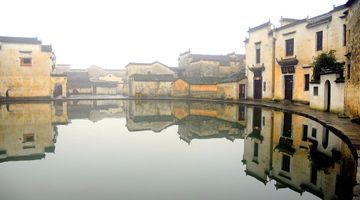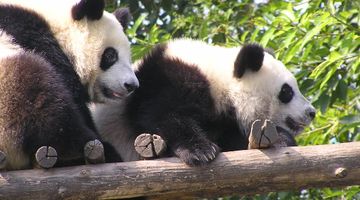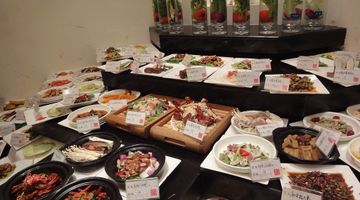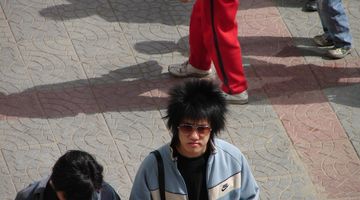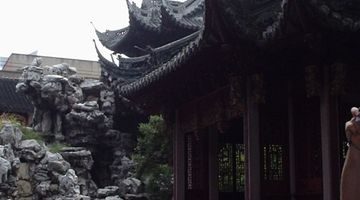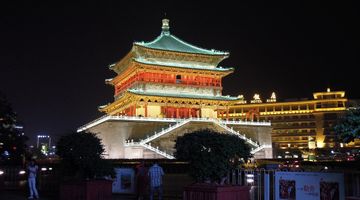16 Interesting, Unusual and Fun Facts about China
China has a long history, more than 8,000 years in fact. It also has a very large population and China is fast emerging from its being a closed country into potentially becoming a superpower in today’s world. You will be pleasantly surprised at some of the interesting, unusual and fun facts about China and the land of mystery.
1. Fact Number One – The Interesting Significance of Silk
Silk was first discovered in China with an astounding discovery when some silkworm eggs fell into a cup of hot tea when being served to a Chinese Empress, Lady Xi Ling Sui, the wife of Huang Di, the Chinese Emperor in 3000 BC. The threads of silk started to come out, unravelling as they emerged. The Russians named China Sercia, which means ‘Land of Silk’. The discovery of silk and how it was made became a fiercely guarded secret within China and the punishment for smuggling the cocoons of silk out of the country was execution.
2. Fact Number Two – Fun Facts about Chinese Sport
There are some unusual facts about two of China’s most popular sports. The sports of table tennis or ping pong as it is known in China and football or soccer. Many people believe the sport of table tennis originates from China when it was actually invented in Great Britain. Equally there is strong belief that the game of football or soccer as it is known across parts of the world was invented in England while there is evidence to prove that claim as false as a version of a similar ball game was first played in China around 1000BC.
3. Fact Number Three – Things that were Invented in Ancient China
There were several important inventions or discoveries made by the Ancient Chinese that have made important contributions to the world. Paper was invented in ancient China and a later invention was toilet paper, although when it was first used it was only for emperors to use. The four inventions most attributed to China are paper, gunpowder, printing and the compass. Historically at least 20 inventions can be claimed as being of Chinese origin.
4. Fact Number Four – Interesting facts about Colour in Chinese Culture
Colours play an important part in the daily lives of Chinese people and have done for centuries. Black is considered to be the colour of heaven and death, although white is the official colour of mourning. People attending funerals in China will wear white and not black as is worn in many other countries around the world. Red symbolizes fire, joy and good luck. It is the most significant colour used in China, by the government, for celebrations such as holidays, birthdays and weddings. It is forbidden to wear red to funerals. Green is associated with health, harmony and prosperity. Although green hats are associated with infidelity. White is for brightness, fulfilment and purity. The ancient Chinese only wore white when in mourning. Yellow is associated with the earth and is considered to be beautiful and prestigious. It is also used to denote heroism, the opposite to western countries associating yellow with cowardice. In modern China yellow is also linked to pornography, Yellow Movies in China are the same as Blue Movies in other countries.
5. Fact Number Five – Interesting Facts about the Chinese New Year
The Chinese New Year or Spring Festival is the most important holiday in China. It is for many one of the only times during the year the family will be together. In the days leading up to the holiday people will clean their houses to sweep away any bad luck and place red paper couplets around their doors and windows. The couplets will display messages such as good fortune or happiness, wealth and longevity. It is a time of celebration with firecrackers and it is traditional that the ashes from the firecrackers are not swept away for three days. Money is given in red paper envelopes and dumplings are the food traditionally eaten during this celebration.
6. Fact Number Six – Unusual Facts about the Statistics of China
Despite the huge size of the country, all of China is under one time zone. In the far west of the country dawn may not break until after 9am due to the time being monitored from Beijing over 3000 km away. It would take more than 30 hours of constant driving to travel across China from east to west. It is the fourth largest country in the world behind Russia, Canada and just a little smaller than the USA. There are about 5,000 islands that are claimed by China. China shares a land border with 14 other countries in Asia, its land border measures 117,445 miles or almost 190,000 km.
7. Fact Number Seven – A Fun Fact (or Two) about Bicycles and China
The bicycle was only introduced into China in 1891 by two travellers from the United States named Sachtleben and Allen. For many years the bicycle was the primary means of transport for millions of Chinese people. As the country has modernized so has its reliance on this mode of transport, now more people ride electric bikes in the major cities than the conventional bicycle.
8. Fact Number Eight – Unusual Facts about Chinese Martial Arts
Martial arts that developed in China originated from methods used by ancient farmers and hunters. A secret group developed known as the Yihequan or Ihochuan (the Society of Righteous and Harmonious Fists) that practiced weaponless martial arts in addition to secret rituals. The practice of shadow boxing as it became known in the west led to this group being the chief instigators in the Boxer Rebellion in northern China from 1898 until 1901 which tried to overthrow foreign diplomats, Christian missionaries and modern technology.
9. Fact Number Nine – Interesting Facts about Chinese Food
The Chinese food that is eaten in China is very different to the Chinese food that is sold in Chinese restaurants throughout the western world. The Chinese food outside China is adapted to be more palatable to western tastes. The food sold in western Chinese restaurants is likely to be similar to that originating from the Cantonese province of Guangdong or Hong Kong. Every province in China will claim that their style of cooking is the best in China. Sichuan has some of the spiciest food while the nearby city of Chongqing is well known for its fiery tasting hot pot.
China invented ice cream with a mixture of soft milk and rice being packed into snow. When Marco Polo visited China he took the recipe and one for noodles back to Italy with him. Mushrooms have been part of the Chinese diet for at least 3,000 years. China produces more than 600,000 tons of mushrooms each year and is home to 60% of the world’s varieties of mushrooms.
Chinese fortune cookies are not from China, they were invented in 1920 in a San Francisco noodle factory. But tea is from China, it was discovered in 2737BC when a tea leaf landed in some boiling water being prepared for Chinese Emperor Shennong. Tea is considered by the Chinese to be one of life’s necessities.
10. Fact Number Ten – Interesting Facts about Chopsticks
As long as centuries ago as the population of China began to grow the need to conserve fuels needed to cook food for such a vast population led to food being cut into small pieces so that it cooked faster. The bite sized pieces of food meant it was also easier to eat using chopsticks. Most Chinese people have never used a knife and fork when eating food. The demand for disposable chopsticks in China requires 20 million trees to be felled each year.
11. Fact Number Eleven – Interesting Facts about Civilization, Writing and Mathematics
China is believed to have had the world’s longest continuous civilization with the dawn of the Chinese civilization being 6,000 BC. Chinese is also the longest continuously used language in the world. The system of writing adopted by the Chinese began around the 2nd century BC. The world’s first decimal system was in use in China from the 14th century BC which is around 2,300 years before it was first used by mathematicians in Europe. The symbol and use of zero was another first for China. The system of mathematics used in China evolved completely independently of that used by Greek mathematicians; this difference is of great interest to mathematics historians.
An unusual fact, that during the Tang dynasty people with a high level of education were expected to greet each other and say goodbye only using poetic verse that was thought up on the spot.
12. Fact Number Twelve – Fun Facts about Beijing
China’s capital city has in the past had many names including Yanjing, Dadu and Beiping. It was then known as Peking until Beijing was adopted because of the pinyin spelling. Beijing means ‘Northern Capital’ and is the third largest city in China behind Shanghai and Chongqing.
Tiananmen Square in the center of Beijing is the largest public gathering place in the world. It holds the mausoleum to MaoZedong (Chairman Mao) and hundreds of people file past his embalmed body daily. Across the road from Tiananmen Square is the entrance to the Forbidden City (also known as the Hidden City). It had this name because common people were forbidden to enter; anyone that looked at the emperor would be put to death.
The Grand Canal is 1,114 miles long or 1,795 km. it connects Beijing with Hangzhou and is the world’s oldest and longest canal. Along its route there are 24 locks and 60 bridges.
13. Fact Number Thirteen-–Unusual Facts about Birthday’s, Names, World Population and Mandarin Chinese
According to Chinese traditions everyone’s birthday falls on the day of the Chinese New Year. When babies are born they are traditionally a year old at the time of their birth. Chinese people do not have middle names; the family name (always the father’s family name) is followed by a name chosen by the father. Women keep the same name throughout their life and do not adopt the name of their husband when they marry.
One in every five of the world’s population is Chinese, with an estimated 1.4 billion people living in China. Mandarin Chinese is spoken by more people in the world than any other language.
14. Fact Number Fourteen – Interesting Facts about Animals in Chinese Traditions
The bat, often referred to as vermin in western society is considered to be lucky in China. It is often depicted on porcelain, textiles and other traditional crafts. Fish are important symbols in Chinese culture, particularly the carp; it is seen as representing strength and perseverance. The combination of whiskers and scales resemble a dragon, China’s greatest symbol of power.
The dragon is seen as being an evil creature in western culture, in China it is the opposite. It is ranked first among the four creatures mentioned in ancient Chinese mythology. The other creatures of importance are the phoenix, the tiger and the tortoise.
Giant Pandas have existed in China for 2 or 3 million years, they were kept by the earliest Chinese emperors to help ward off evil spirits and help prevent natural disasters. They were also revered for their strength and bravery.
The phoenix was an important legendary bird to symbolize feminine power particularly that of the empress. The crane, graceful and leading to a long life is the next important bird in Chinese legends, while ducks represent marital faithfulness and happiness.
15. Fact Number Fifteen – Interesting Facts about Birds
There are more species of birds living in China than in any other place in the world with over 1300 different species native to China.
16. Fact Number Sixteen – An Unusual Fact about a Tree
The Ginkgo is the world’s oldest specie of tree. It has remained unchanged for more than 200 million years. It is considered to be a living fossil and is widely used in Chinese traditional medicine and is believed to improve your memory and levels of concentration.















